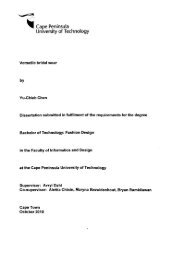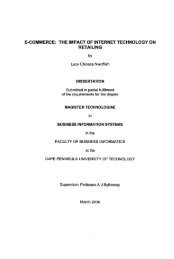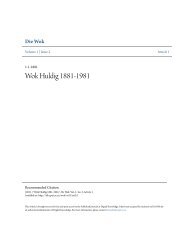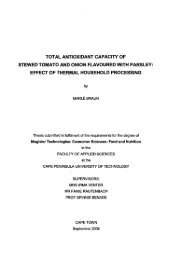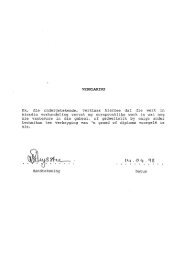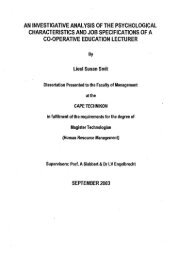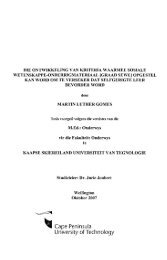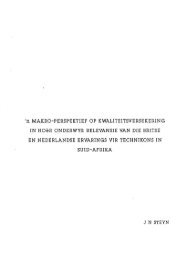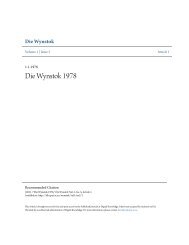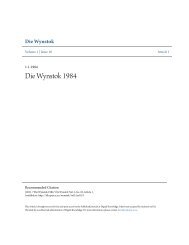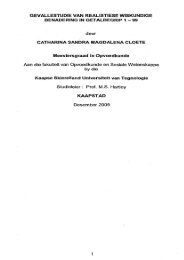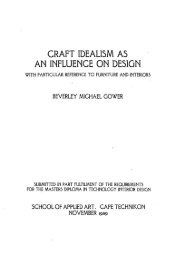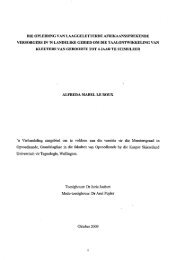the effect of the particle size distribution on non-newtonian turbulent ...
the effect of the particle size distribution on non-newtonian turbulent ...
the effect of the particle size distribution on non-newtonian turbulent ...
You also want an ePaper? Increase the reach of your titles
YUMPU automatically turns print PDFs into web optimized ePapers that Google loves.
Chapter 3 Experimental Work Page 3.18<br />
3.5 OTHER MEASURED VARIABLES<br />
3.5.1 Slurry Density<br />
Slurry density and relative density are determined by performing <str<strong>on</strong>g>the</str<strong>on</strong>g> following steps.<br />
1. A clean, dry <strong>on</strong>e litre volumetric flask is weighed (M,).<br />
2. The volumetric flask was filled with slurry from a tapping in <str<strong>on</strong>g>the</str<strong>on</strong>g> pipe wall <strong>on</strong><br />
<str<strong>on</strong>g>the</str<strong>on</strong>g> vertical secti<strong>on</strong> above <str<strong>on</strong>g>the</str<strong>on</strong>g> pump before it splits into <str<strong>on</strong>g>the</str<strong>on</strong>g> 80mm and 150mm<br />
pipelines. The volume <str<strong>on</strong>g>of</str<strong>on</strong>g> slurry is approximately 990ml.<br />
3. The flask plus slurry are weighed (Mz).<br />
4. The flask is <str<strong>on</strong>g>the</str<strong>on</strong>g>n filled with water up to <str<strong>on</strong>g>the</str<strong>on</strong>g> graduated mark and weighed<br />
(M3)·<br />
5. The flask is emptied, filled with clear water and weighed again (M4)'<br />
6. Steps 1-5 were repeated except that in step 2 slurry was taken from a tapping<br />
in <str<strong>on</strong>g>the</str<strong>on</strong>g> horiz<strong>on</strong>tal test secti<strong>on</strong>.<br />
The relative slurry density Sm is defined as:<br />
Sm = __m_as.-s_o_f..."s_lurry--;=---sam_..:,p1,...e__<br />
mass <str<strong>on</strong>g>of</str<strong>on</strong>g> equal volume <str<strong>on</strong>g>of</str<strong>on</strong>g> water<br />
S.. is calculated using <str<strong>on</strong>g>the</str<strong>on</strong>g> above equati<strong>on</strong> and slurry density is calculated from:<br />
p = Sm P w •<br />
(3.10)<br />
(3.11)<br />
Normally <str<strong>on</strong>g>the</str<strong>on</strong>g> use <str<strong>on</strong>g>of</str<strong>on</strong>g>tappings for sampling slurries is not a good procedure to follow however<br />
in this particular case <str<strong>on</strong>g>the</str<strong>on</strong>g> following should be noted:<br />
•<br />
•<br />
<str<strong>on</strong>g>the</str<strong>on</strong>g> slurry being tested was homogeneous;<br />
<str<strong>on</strong>g>the</str<strong>on</strong>g> point at which slurry was tapped was from an area where <str<strong>on</strong>g>the</str<strong>on</strong>g> slurry had been well<br />
mixed;<br />
Slatter (1994) compared this method against samples taken from o<str<strong>on</strong>g>the</str<strong>on</strong>g>r points in <str<strong>on</strong>g>the</str<strong>on</strong>g><br />
pipe system and hopper and found no discrepancies.



